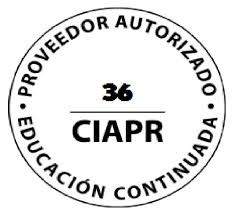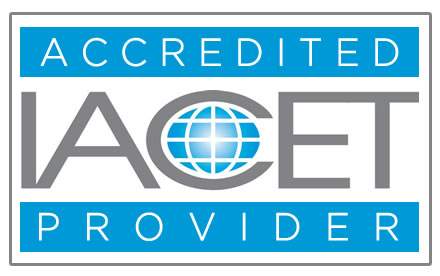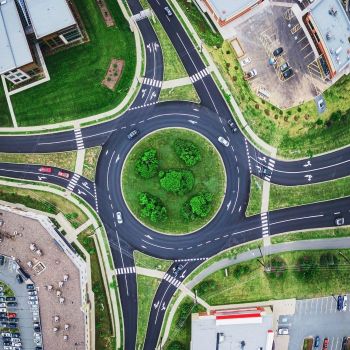3T-Road Diet
Road diets can be used to address safety concerns with four-lane undivided highway associated with relatively high crash rates as traffic volume increase and as the inside lane is shared by high-speed and left-turning vehicles. The reduction of lanes allows the roadway cross section to be reallocated for other uses such as bike lanes, pedestrian refuge islands or parking.
Description The purpose of this course is to provide information on the most common road diet involving converting an existing four-lane undivided roadway segment to ta three-lane segment consisting of two through lanes and center two-way, left-turn lane (TWLTL). Road diets can be used to address safety concerns with four-lane undivided highway associated with relatively high crash rates as traffic volume increase and as the inside lane is shared by high-speed and left-turning vehicles. The reduction of lanes allows the roadway cross section to be reallocated for other uses such as bike lanes, pedestrian refuge islands or parking.
The benefits of road diets include improved safety, traffic calming and the opportunity to repurpose segments of the roadway to create on-street parking, bike lanes or transit stops. Based on the history of safety studies, designers can expect a crash reduction of 19 to 47 percent after installing a road diet. Variables include pre-installation crash history, installation details and the urban or rural nature of the corridor.
When planning for or designing a road diet, it is important to be aware of the opportunities and potential drawbacks that one type of treatment may have on other travel modes. When deciding whether a particular element tis appropriate for an individual street, or whether a road diet in general is appropriate, the surrounding context should be taken into consideration, including the extended roadway network.
Designers must make a number of operational decisions as well, including cross-section allocations, pedestrian accommodations, signalization changes, transition points and pavement marking and signing. As with any roadway treatment, data analysis and engineering judgment are required to determine whether a road diet is the most appropriate alternative in a given situation.
Once implemented, it is important to evaluate the effectiveness of the road diet. This typically occurs through studying pre-and post-installation crash data, operation speeds and operational level of service.
In conclusion, a road diet can be a low-cost safety solution when the installation is coordinated with schedule pavement marking modifications or planned in conjunction with reconstruction or simple overlay projects.
Course Outline:-
The Road Diet course provides the definition and background information of road diets. It addresses safety concerns. It also provides a history of road diets and safety evaluations. It provides reasons to consider a road diet and covers road diet feasibility determination. Safety factors and operations factors are discussed. It also addresses how to determine if a road diet is effective.
The course is designed to provide a basic knowledge of road diets. A road diet, also called a lane reduction or road rechannelization, is a technique in transportation planning whereby the number of travel lanes and/or effective width of the road is reduced in order to achieve systemic improvements.
A roadway reconfiguration know as a road diet offers several high-value improvements at a low cost when applied to traditional four-lane undivided highways. In addition to low cost, the primary benefits of a road diet include enhance safety, mobility and access for all road users and a “complete streets” environment to accommodate a variety of transportation modes.
A classic road diet typically involves converting an existing four-lane, undivided roadway segment to a three-lane segment consisting of two through lanes and a enter, two-way left turn lane.
As more communities desire “complete streets” and more livable spaces, they look to agencies to find opportunities to better integrate pedestrian and bicycle facilities and transit options along their corridors. When a road diet is planned in conjunction with reconstruction or simple overlay projects, the safety and operational benefits are achieved essentially for the cost of restriping. A road diet is a log-cost solution that addresses safety concerns and benefits all road users – a win-win for quality of life. .
| Objetivos de aprendizaje | Objectives
|
|---|---|
| Horas de Contacto | 3 Horas |
| Cursos CIAPR | CURSO TECHNICO |
| Instructor | Debra Kennaugh, P.E. |
| Dispositivos | Desktop, Tablet, Mobile |
| Idioma | English |

IACET ACCREDITED PROVIDER
|
Self Learning Solutions LLC es una empresa con más de 14 años de experiencia en este mercado. En Self Learning Solutions estamos orgullosos de haber obtenido la acreditación IACET para nuestra organización, junto con las aprobaciones necesarias para comercializar nuestros productos en todo Estados Unidos. Self Learning Solutions está acreditado por la Asociación Internacional para la Educación y Formación Continua (IACET). Self Learning Solutions cumple con el estándar ANSI / IACET, que es reconocido internacionalmente como un estándar de excelencia en las prácticas de instrucción. Como resultado de esta acreditación, Self Learning Solutions está acreditada para emitir la CEU IACET. |
Requisitos del sistema de SLSTECH
Para ejecutar nuestro sistema de manera eficaz, como mínimo, debe utilizar los componentes del sistema que se enumeran en esta página. Si no lo hace, es posible que el sistema aún funcione pero que se pierda alguna funcionalidad. Las configuraciones internas de los entornos de IT del lugar de trabajo también pueden restringir la funcionalidad de nuestro sistema. El acceso al contenido puede verse afectado, al igual que la posibilidad de subir archivos. También pueden aplicarse limitaciones de tamaño de archivo. Los lugares de trabajo también pueden tener versiones anteriores de software, y nuestro sistema puede no funcionar bien con estos.
Sistema operativo
-
Recomendado: Windows 7, 10, Mac OSX Sierra, iPad IOS10
Velocidad de Internet
-
Use una conexión de Internet (broadband connection) (256 Kbit / seg. o más rápida, esto le permitirá ver videos y presentaciones en línea) a través de un módem inalámbrico USB, ADSL, T1 / T2, fibra óptica o cable.
-
El acceso telefónico será mucho más lento y no lo recomendamos para usar nuestro systma.
Navegadores de Internet
Los navegadores compatibles incluyen:
-
Google Chrome 32 bit versión 50 o posterior (recomendado para una compatibilidad óptima, esto se ha probado exhaustivamente en Windows)
Safari 10 o posterior (recomendado para una compatibilidad óptima, esto se ha probado exhaustivamente en Mac)
Tenga en cuenta que los complementos y las barras de herramientas pueden afectar el rendimiento de cualquier navegador.
-
No se recomienda MS Internet Explorer
Configuraciones
Recomendamos que se habilite lo siguiente:
-
Cookies
-
Ventanas emergentes "Pop-ups" (tanto en el navegador de Internet como en el software de seguridad)
-
Javascript
-
Le recomendamos que utilice la última versión de Adobe Flash Player.
Software
-
Le recomendamos que utilice la última versión de Adobe Acrobat Reader.
-
Para ver todos los recursos cargados en Hazmat Authority, es probable que necesites tener instalado Microsoft Office (Word, Excel, PowerPoint) o un equivalente (por ejemplo, Open Office, Viewer).
Seguridad
Con todos los "firewalls", asegúrese de habilitar la carga de archivos.













Validate your login
Registrarse
Crear una nueva cuenta